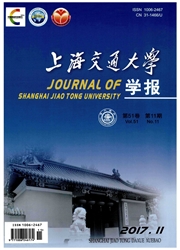

 中文摘要:
中文摘要:
以传统TWIP钢为对比,测试了含N TWIP钢的力学性能,并利用XRD进行物相分析和TEM进行做观结构表征.结果表明,在由fcc或hcp结构向bcc结构马氏体进行相变时,晶体结构中的最大间隙由0.1047 nm降低至0.0725 nm.间隙原子N的存在显著增大bcc结构的晶格畸变能,提高α马氏体切变的阻力,因而强烈抑制α马氏体相变,导致组织中hcp结构ε相含量大幅度增加,提高了TWIP钢的强度,但也降低了钢的塑性.另外,奥氏体平均和区域层错几率的计算及微观组织分析结果表明,形变增加层错的数量,而马氏体相变消耗层错,从而减少层错数量.
 英文摘要:
英文摘要:
Twinning induced plasticity (TWIP) steels show large elongation and high tensile strength, exhibiting a super balance between strength and plasticity. Until now, the effects of Mn, Si and A1 on stacking fault energy (SFE) and phase transformation of TWIP steel had been investigated, but the effect of N on phase transformation, especially martensitc transformation in TWIP steel has not been reported. In the present paper, the mechanical properties of TW1P steel with the addition of N were tested. The phases were analyzed by XRD and the microstructure was characterized by TEM. The average and local probabilities of stacking faults were also calculated by using shifts of X-ray peak and electron diffraction spot, respectively. Compared with the conventional TWIP steel, the results showed that at a lower SFE level, when fcc austensite or hcp martensite transformed to bcc martensite, the largest interstice decreased from 0.1047 to 0.0725 nm. The lattice distortion energy of bcc martensite was greatly enlarged by N, which situated in the interstices, leading to the suppression of the bcc martensitic transformation. As a result, the content of hcp martensite increased, causing the increase of strength and decrease of plasticity. Besides, the results also showed that deformation increased stacking faults and hcp or bcc martensitic transformation consumed a large number of stacking faults.
 同期刊论文项目
同期刊论文项目
 同项目期刊论文
同项目期刊论文
 On method of discrimination between stress-assisted and strain-induced martensitic transformation us
On method of discrimination between stress-assisted and strain-induced martensitic transformation us 期刊信息
期刊信息
